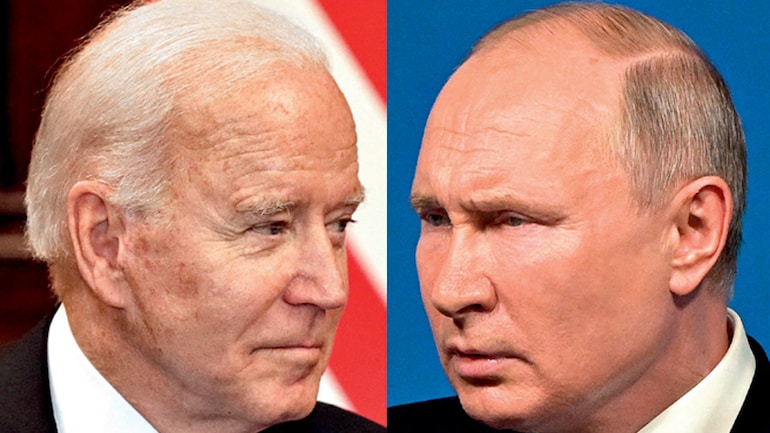On 08 March 2022, USA banned Russian oil imports as part of various sanctions that it has levied on Russia in view of the ongoing Russia-Ukraine war since 24 February 2022.
Exactly two years ago on 08 March 2020 as the Covid-19 pandemic was raging the world over, Saudi Arabia had initiated a price war along with Russia which had led to a 65% quarterly fall in the price of oil.
At that time Russia in a well calculated move walked out of the dialogue it was having with the Organisation of the Petroleum Exporting Countries (OPEC) over proposed oil production cuts due to the pandemic, which eventually led to the OPEC alliance becoming powerless as Saudi Arabia the pivotal member of OPEC, sided with Russia.
OPEC which was founded in September 1960, is an organisation of 13 countries which combined together accounts for 44% of the global oil production and 81.5% of the world’s proven oil reserves. The aim of OPEC is to stabilize oil prices in order to ensure regular and efficient supply of petroleum to consumers.
Russia on the other hand produces 12% of the global oil and Saudi Arabia produces 17%. Thus, Russia and Saudi Arabia combined produce nearly one-third of the global oil.
USA produces 18.6% of the world’s oil and is the biggest producer of oil in the world.
The other big oil producing countries in their order of ranking as per their percentage of global oil production are Canada (5.8%), Iraq (4.7%), China (4.4%), UAE (4.1%) and Iran (3.5%).
In October 1973, OPEC led by Saudi Arabia imposed an oil embargo on countries that included USA & UK which had supported Israel in the Yom Kippur War of 1973. As a result, in March 1974 the oil prices escalated over 300% from US$ 3 per barrel to nearly US$ 12 per barrel. This is called as the 1973 Oil Crisis or the First Oil Crisis.
In 1979 there was a drop in oil production due to the Iranian Revolution. This is called as the 1979 Oil Crisis or the Second Oil Crisis and saw the oil prices reaching a staggering US$ 39.50 per barrel.
The Iran-Iraq war which started on 22 September 1980 and lasted till 20 August 1988 further added to the global oil woes.
Just in six years from 1973 to 1979 the oil prices rose steeply from US$3 to US$ 39.50 per barrel which affected the cost of living worldwide and more so in USA as its domestic output of oil could not keep pace with its internal demand leading to fuel shortages and long lines at the petrol pumps or gas stations as they are called in USA.
The pre-1970 period saw USA importing oil from Venezuela and Canada but not from the Middle East due to the high transportation costs involved.
President Dwight Eisenhower of USA imposed quota on import of foreign oil in 1959 that would remain in force in 1973. These restrictions on import of foreign oil called the Mandatory Oil Quota Import Program whose aim was to prevent the American dependence on foreign oil backfired badly and it resulted in the decline of the domestic US oil production since the early 1970s because the extraction of the domestic US oil was not proving to be economically viable when compared to importing oil.
When Richard Nixon became the President of USA in 1969, he tasked George Shultz his Secretary of Labour who was also a noted economist to head a committee to review the oil quota system that had been introduced by Eisenhower. Shultz recommended that the quota system be abolished and be replaced by tariffs. In 1973 Nixon ended the quota system.
The early 1970s saw USA importing oil from the Middle East too. The period 1970 to 1973 saw US oil imports double to 6.2 million barrels per day. Thus, the US dependence on foreign oil had increased tremendously.
Now the First and the Second Oil Crisis had a tremendous impact in USA and its citizens suffered tremendously. It was then USA realised that oil is the black gold and control over it is essential, whatever be the costs.
Prior to its breakup on 26 December 1991, USSR had the highest oil reserves in the world, a fact which put USA at unease. Post breakup of USSR, Russia has a 12% share in the global market regarding oil production.
Both USA and Russia knew by now the importance of keeping good relations with Saudi Arabia who with 17% of the global oil production could sway things in the petroleum sector. And USA and Russia left no stone unturned to woo Saudi Arabia.
In beginning April 2020 Saudi Arabia and Russia agreed to oil production cuts which led to the price of oil becoming negative on 20 April 2020. However, output still exceeded the demand of oil. This was primarily because of Covid-19 there was virtually no demand for oil but the oil wells have to be kept operational so minimum extraction of oil has to be done else the oil wells will dry up because oil moves up in the layers of the earth due to capillary action.
So, on 08 March 2020 when Saudi Arabia virtually walked out of OPEC and joined hands with Russia, USA knew that the silent oil war it was having with Russia had taken a new dimension.
Globally the oil prices are calculated on a barrel. A barrel contains 159 litres of oil. On 02 March 2022 as the Russia-Ukraine War was in full swing and the threats of the USA banning the import of Russian oil loomed large which eventually happened on 08 March 2022, the price of one barrel of crude oil touched US$ 110. The day the Russia-Ukraine War started on 24 February 2022 the cost of one barrel of crude oil was US$ 92.81. Russian oil imports in USA account for just 2% out of the 20% oil that USA imports from various countries to meet its internal oil deficit.
The Russian President Vladimir Putin has already warned that in case its oil comes under sanctions by USA and the West the cost of one barrel of crude oil will spiral to US$ 300. This will have a serious repercussion on the cost of living of every human across the world.
The two years of the Covid-19 pandemic since 2020 saw less demand for oil as travel and tourism sector virtually collapsed. But now as normalisation kicks in, oil once again comes back to the focus. And this is quite explained by the impending visit of the US President Joe Biden to Saudi Arabia anytime soon to convince them to pump in more oil so that the Russian’s market share of 12% of the global oil gets dented as a counter to the Russian invasion of Ukraine on 24 February 2022.
The war between Russia and USA over oil gets stiffer with each passing day without both the countries firing a bullet at each other directly.
Mason Cooley’s quote “Courage, determination and hard work are all very nice, but not so nice as an oil well in the backyard” proves that almost every war in the world that has been fought since the World War II had the interests of the oil lobby, the gas lobby or the arms lobby involved as its centre of gravity.





